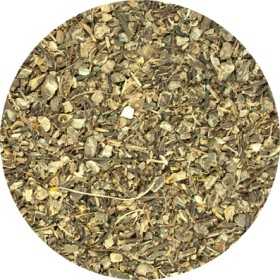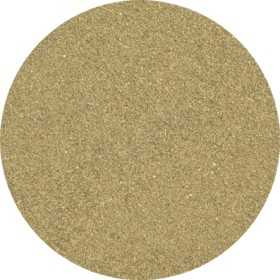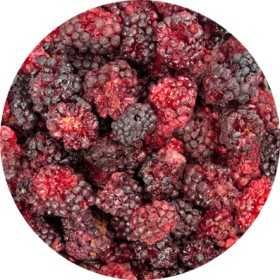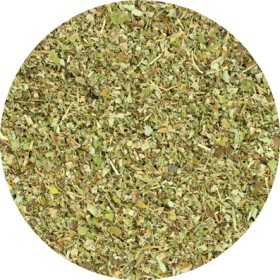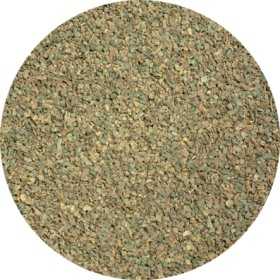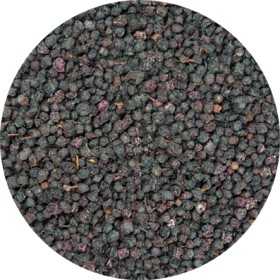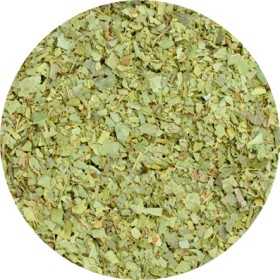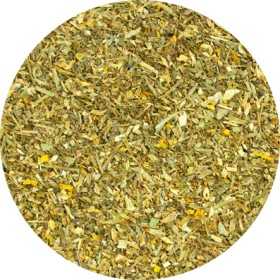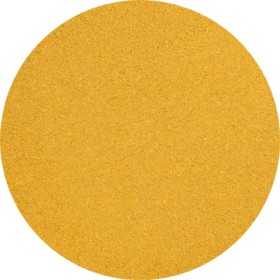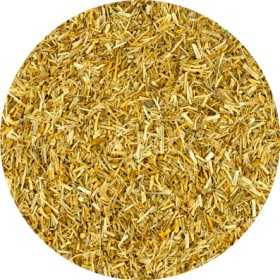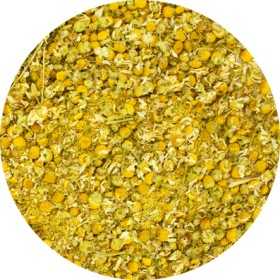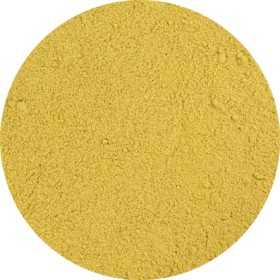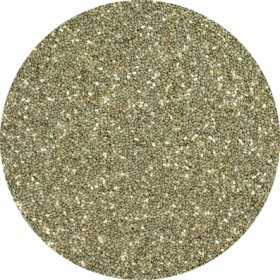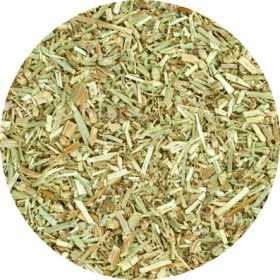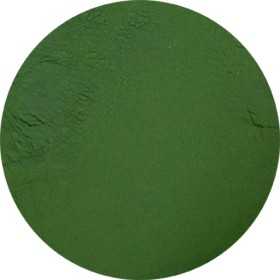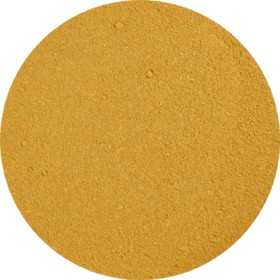Herbs
There are 208 products.
Bitterhout - Quassiae
Quassia, known in Surinamese as kwasibita, is the heartwood of the Quassia amara, a plant species from the Quassia genus within the Tree of Heaven family. This South American plant is often planted in the tropics for its use as a remedy for malaria.
Quassia amara is a small, evergreen shrub found in tropical South America, particularly the Guianas, northern Brazil and Venezuela. The plant grows in the understory of the rainforest and its striking red flowers are pollinated by hummingbirds. Because of these beautiful flowers, the plant is also often planted for decorative purposes.
Quassia amara is a small, evergreen shrub found in tropical South America, particularly the Guianas, northern Brazil and Venezuela. The plant grows in the understory of the rainforest and its striking red flowers are pollinated by hummingbirds. Because of these beautiful flowers, the plant is also often planted for decorative purposes.
€2.80
From: €2.80
Black Cohosh - Cimicifuga Racemosa
Black cohosh (Cimicifuga racemosa), has been used in North American herbal medicine for centuries. The roots of this plant have been used for centuries by northern Indian tribes, where it is known as "squawroot" (where 'squaw' refers to 'Indian woman'). Black cohosh is best known as an herb specifically aimed at women and is becoming increasingly popular in the Netherlands. It provides support for menopausal symptoms such as hot flashes and irritable feelings.
€9.80
From: €9.80
Black Pepper - Piper nigrum
Pepper is a commonly used spice in cooking, known for its sharp taste. It is obtained from the berries of the tropical pepper plant, Piper nigrum. The pungency of black peppercorns comes from the component piperine. Pepper comes in different colors, including black, white and green.
It can be used in virtually any dish and enhances the flavor of meat while adding a spicy note to soups and purees. Sometimes pepper is also used in baking products, such as gingerbread, albeit in moderate amounts. Whole peppercorns, dried berries of the pepper plant, are used in some dishes. Although pepper is also available ground, many gourmets prefer freshly ground pepper. In addition, pepper is also often used fresh. In India, pepper is added to the spiciest curry mixtures.
It can be used in virtually any dish and enhances the flavor of meat while adding a spicy note to soups and purees. Sometimes pepper is also used in baking products, such as gingerbread, albeit in moderate amounts. Whole peppercorns, dried berries of the pepper plant, are used in some dishes. Although pepper is also available ground, many gourmets prefer freshly ground pepper. In addition, pepper is also often used fresh. In India, pepper is added to the spiciest curry mixtures.
€3.00
From: €3.00
Black Tea Assam - Camellia sinensis
Black Tea Assam is a black tea from the state of the same name in India. Since 1838, this tea has also been drunk outside India, but in the first 25 years it could not compete with the already popular Japanese and Chinese teas, which had been popular in Europe since the 17th century. Today, about half of the total Indian tea production comes from Assam, making this region more popular than the other famous Indian teas: Darjeeling and Nilgiri.
€2.95
From: €2.95
Black Walnut - Juglandis nigrum
The shell of the black walnut (Juglans nigra) comes from the immature fruits of the black walnut tree (Juglans nigra).
Black walnut (Juglans nigra, also known as 'black nut') is a species of walnut that grows naturally only in the United States and Canada, hence the term American black walnut. Juglans nigra belongs to the walnut family.
The fruits are dark brown and have a strong odor distinct from European walnuts. In America, the use of black walnut has long been common among herbalists. It is often used in the form of an extract or tincture in herbal medicine, because this way the active substances are optimally preserved. The fruits are edible and contain polyphenols, tannins, juglon, tannins and omega fatty acids.
Black walnut (Juglans nigra, also known as 'black nut') is a species of walnut that grows naturally only in the United States and Canada, hence the term American black walnut. Juglans nigra belongs to the walnut family.
The fruits are dark brown and have a strong odor distinct from European walnuts. In America, the use of black walnut has long been common among herbalists. It is often used in the form of an extract or tincture in herbal medicine, because this way the active substances are optimally preserved. The fruits are edible and contain polyphenols, tannins, juglon, tannins and omega fatty acids.
€2.50
From: €2.50
Blackberry (Fruit) - Rubus fructicosus, Frucus Rubi
Blackberries are not only delicious, but also extremely nutritious. They are packed with essential nutrients and dietary fiber. These dark purple treats are a rich source of vitamins C, E, K, folic acid and manganese, making them an important contribution to a healthy diet.
The intense purple color of blackberries is caused by anthocyanins, powerful antioxidants that protect our cells against harmful external influences. But it goes further than that. Blackberries are particularly rich in phenolic acids, which also have antioxidant properties. These acids, which include anthocyanins, ellagic acid, rutin, gallic acid, quercetin, cyanides, p-coumaric acid and cinnamic acid, provide numerous health benefits.
The intense purple color of blackberries is caused by anthocyanins, powerful antioxidants that protect our cells against harmful external influences. But it goes further than that. Blackberries are particularly rich in phenolic acids, which also have antioxidant properties. These acids, which include anthocyanins, ellagic acid, rutin, gallic acid, quercetin, cyanides, p-coumaric acid and cinnamic acid, provide numerous health benefits.
€10.00
From: €10.00
Blackberry (Leaf) - Rubus fructicosus, Frucus Rubi
The genus Blackberry (Rubus) belongs to the rose family and has more than 1400 species worldwide. More than 200 of these species grow in the Netherlands and Belgium.
Blackberries are prized primarily for their fruits, which range in color from red to dark blue. They have a sweet taste and can be eaten fresh or processed into jam, for example.
The leaves of the blackberry can be used to make herbal tea. After picking, the leaves should be dried in a dry and airy place, after which they can be used to make tea.
Blackberries are prized primarily for their fruits, which range in color from red to dark blue. They have a sweet taste and can be eaten fresh or processed into jam, for example.
The leaves of the blackberry can be used to make herbal tea. After picking, the leaves should be dried in a dry and airy place, after which they can be used to make tea.
€2.00
From: €2.00
Blackcurrant - Ribes nigrum
The Latin name for blackcurrant is Ribes nigrum L. 'Nigrum' refers to the dark color and 'ribes' to the berries themselves. Various parts of the blackcurrant plant are attributed with different health benefits. The berries, seeds and leaves exhibit unique properties. For example, blackcurrant leaves are used to maintain healthy cartilage and to keep the joints flexible.
€2.95
From: €2.95
Bladderwrack Fine - Fucus vesiculosus
Bladderwrack (Fucus vesiculosus) is a type of brown algae belonging to the genus Fucus. It thrives along the northern coasts of the Atlantic and Pacific Oceans, and in the North Sea and Baltic Sea, often found in kelp forests. This seaweed is characterized by air bladders that serve as a floating organ, although there are also variants without these bladders.
Like other brown algae, bladderwrack is rich in a specific class of polyphenols called phlorotannins, which possess powerful antioxidant properties. In addition, these phlorotannins have antibiotic, antifungal and anti-inflammatory properties.
Like other brown algae, bladderwrack is rich in a specific class of polyphenols called phlorotannins, which possess powerful antioxidant properties. In addition, these phlorotannins have antibiotic, antifungal and anti-inflammatory properties.
€2.50
From: €2.50
Blessed Thistle - Centaurea benedicta
Centaurea benedicta, commonly known as St. Benedict's Thistle, blessed thistle, holy thistle, spotted thistle or dissolved knapweed, is a thistle-like plant belonging to the family Asteraceae. Originally native to the Mediterranean region, it ranges from Portugal and southern France to Iran. Outside its native habitat it is often found as a systematic species and in some regions such as North America it is observed as a conventional weed.
This annual plant grows up to 60 cm tall and has leathery, hairy leaves that can reach 30 cm long and 8 cm wide.
This annual plant grows up to 60 cm tall and has leathery, hairy leaves that can reach 30 cm long and 8 cm wide.
€2.25
From: €2.25
Blue Berrie - Vaccinium mytrillus, Frucus myrtilli
The blueberry (Vaccinium myrtillus) is not only nutritious, but also extremely popular. These berries are extremely low in calories and are often labeled as a superfood. Although low in calories, blueberries are packed with beneficial nutrients, including antioxidants like flavonoids and anthocyanins.
Additionally, they contain a wide range of other compounds, including folic acid, vitamins A and C, carotenoids, ellagic acid and fiber. The specific anthocyanins in blueberries contribute to normal eye function and provide support to the heart and blood vessels.
Additionally, they contain a wide range of other compounds, including folic acid, vitamins A and C, carotenoids, ellagic acid and fiber. The specific anthocyanins in blueberries contribute to normal eye function and provide support to the heart and blood vessels.
€8.20
From: €8.20
Boldoblad - Peumus boldus
Boldo (Peumus Boldus) is a versatile plant with a long history of positive effects on the liver, bile and digestion. It contains a combination of alkaloids, essential oils, flavonoids and tannins, which together provide these beneficial properties. By supporting the liver and bile and promoting healthy digestion, boldo is a valuable addition to a healthy lifestyle. In addition, boldo strengthens the immune system and acts as a powerful antioxidant.
€2.00
From: €2.00
California Poppy - Eschscholzia californica
California Poppy, also known as golden poppy (Eschscholtzia californica), is a plant with golden yellow flowers that belongs to the poppy family. It owes this name to its soothing properties, which help with natural, healthy sleep and stress reduction.
This plant is native to California, hence the name. The indigenous people of America traditionally used golden poppy as a sedative herb and to help them sleep better. The aerial parts of the golden poppy contain several active substances, including quinolide alkaloids, rutin, phytosterols, carotenoids and cyanogen glycosides.
This plant is native to California, hence the name. The indigenous people of America traditionally used golden poppy as a sedative herb and to help them sleep better. The aerial parts of the golden poppy contain several active substances, including quinolide alkaloids, rutin, phytosterols, carotenoids and cyanogen glycosides.
€2.00
From: €2.00
Cat's Claw - Uncaria tomentosa
Cat's claw (Uncaria tomentosa) is a climbing plant that is native to the Amazon region of Brazil and Peru. It is highly valued in the Peruvian Amazon and is among the protected species. This plant is often called the 'sacred herb of the rainforest' because of its significance. The name 'cat's claw' or 'cat's claw' is derived from the small claw-like thorns at the base of the leaves, which resemble a cat's claws. These claws help the vine to wrap itself around trees and climb up to a hundred meters high!
€2.60
From: €2.60
Cat's Claw - Uncaria tomentosa - Cut
Cat's claw (Uncaria tomentosa) is a climbing plant that is native to the Amazon region of Brazil and Peru. It is highly valued in the Peruvian Amazon and is among the protected species. This plant is often called the 'sacred herb of the rainforest' because of its significance. The name 'cat's claw' or 'cat's claw' is derived from the small claw-like thorns at the base of the leaves, which resemble a cat's claws. These claws help the vine to wrap itself around trees and climb up to a hundred meters high!
€2.20
From: €2.20
Catnip - Nepetae catariae
Wild catnip (Nepeta cataria) belongs to a genus of 250 species in the family Lamiaceae. The genus is closely related to Glechoma, Stachys and Prunella. This genus originally occurs in Europe and Asia. The stems grow in nodes and often form dense carpets on the ground. The leaves are coarsely toothed and feel soft because of the hairs. The erect stems bear small, tubular flowers in pairs that are located in the axils of the leaves.
€2.20
From: €2.20
Centaury - Centaurium erythraea
Centaury, also known by the scientific name Centaurium (synonym: Erythraea), includes about fifty species of herbaceous plants belonging to the gentian family (Gentianaceae). The genus may have been named after the centaur Chiron from Greek mythology, who was known for his knowledge of medicinal herbs and reportedly treated his wounds with this herb. An alternative explanation for the botanical name is derived from the Latin 'centum' (= one hundred) and 'aurum' (= gold).
In North America, the European centaury is sometimes cultivated as a medicinal plant and has been partly introduced as an exotic plant. The herb contains various bitter substances, glycosides, flavonoids, essential oils, valeric acid and xanthones.
In North America, the European centaury is sometimes cultivated as a medicinal plant and has been partly introduced as an exotic plant. The herb contains various bitter substances, glycosides, flavonoids, essential oils, valeric acid and xanthones.
€2.50
From: €2.50
Chamomile (Flower) - Matricaria recutita, Chamomillae europ. - Whole
True chamomile, also known as Matricaria chamomilla or Matricaria recutita, is native throughout Europe and widely cultivated in countries such as Hungary and Eastern Europe. The ancient Egyptians revered chamomile as the flower of the sun god Ra. The herb is known for its supportive effect on the immune system, soothing effect on the respiratory tract and promoting digestion. Additionally, chamomile is often used as a natural sedative and to promote restful sleep.
€2.95
From: €2.95
Chamomile - Matricaria recutita, Chamomillae europ.
True chamomile, also known as Matricaria chamomilla or Matricaria recutita, is native throughout Europe and widely cultivated in countries such as Hungary and Eastern Europe. The ancient Egyptians revered chamomile as the flower of the sun god Ra. The herb is known for its supportive effect on the immune system, soothing effect on the respiratory tract and promoting digestion. Additionally, chamomile is often used as a natural sedative and to promote restful sleep.
€3.00
From: €3.00
Chia seeds - Salviae Sem. Hispanica nigri albi
Chia, also known as Salvia hispanica, is a plant from the Lamiaceae family, originally from central and southern Mexico and Guatemala. The Aztecs cultivated this plant even before Columbus discovered America, and chia seeds were used as currency to the rulers. Today, chia is still prized in Mexico and Guatemala; the ground seeds are used in dishes, while whole seeds are often added to nutritious drinks.
The main purpose of growing chia is for its seeds, which are rich in omega-3 fatty acids. About 25-30% of the seed contains vegetable oil, including alpha-linolenic acid (ALA). Chia seeds are small and oval, about 1 mm in diameter, and have a color palette of brown, gray-black and white.
The main purpose of growing chia is for its seeds, which are rich in omega-3 fatty acids. About 25-30% of the seed contains vegetable oil, including alpha-linolenic acid (ALA). Chia seeds are small and oval, about 1 mm in diameter, and have a color palette of brown, gray-black and white.
€2.00
From: €2.00
Chicory (Herb) - Cichorium Intybus
Chicory (Cichorium) belongs to the composite family (Compositae or Asteraceae) and includes well-known vegetables such as chicory and endive. It is mainly consumed for health reasons.
Since the late years of the twentieth century, chicory roots have been cultivated not only for chicory, but also for the production of inulin and sweeteners, especially fructose. Both inulin (a dietary fiber) and fructose are widely used in the food industry.
Roasted chicory root is used as a coffee substitute or as an ingredient in coffee brewing. In the past, this was done out of necessity, such as during the Napoleonic blockade during the French occupation.
Since the late years of the twentieth century, chicory roots have been cultivated not only for chicory, but also for the production of inulin and sweeteners, especially fructose. Both inulin (a dietary fiber) and fructose are widely used in the food industry.
Roasted chicory root is used as a coffee substitute or as an ingredient in coffee brewing. In the past, this was done out of necessity, such as during the Napoleonic blockade during the French occupation.
€2.00
From: €2.00
Chicory (Root) - Cichorium Intybus - Cut
Chicory (Cichorium) belongs to the composite family (Compositae or Asteraceae) and includes well-known vegetables such as chicory and endive. It is mainly consumed for health reasons.
Since the late years of the twentieth century, chicory roots have been cultivated not only for chicory, but also for the production of inulin and sweeteners, especially fructose. Both inulin (a dietary fiber) and fructose are widely used in the food industry.
Roasted chicory root is used as a coffee substitute or as an ingredient in coffee brewing. In the past, this was done out of necessity, such as during the Napoleonic blockade during the French occupation.
Since the late years of the twentieth century, chicory roots have been cultivated not only for chicory, but also for the production of inulin and sweeteners, especially fructose. Both inulin (a dietary fiber) and fructose are widely used in the food industry.
Roasted chicory root is used as a coffee substitute or as an ingredient in coffee brewing. In the past, this was done out of necessity, such as during the Napoleonic blockade during the French occupation.
€2.00
From: €2.00
Chlorella - Chlorella
Chlorella, a single-celled green algae belonging to the green algae family, thrives in lakes and rivers of Southeast Asia. This microscopic organism is a veritable treasure trove of nutrients, including proteins, vitamins, trace elements and omega-3 fatty acids.
Its versatility is reflected in supporting the immune system and promoting liver detoxification. Chlorella also contributes to healthy digestion and supports normal intestinal function. The name 'chlorella' has its origins in the Greek words 'chloros' and 'ella', which mean 'green' and 'small' respectively.
Its versatility is reflected in supporting the immune system and promoting liver detoxification. Chlorella also contributes to healthy digestion and supports normal intestinal function. The name 'chlorella' has its origins in the Greek words 'chloros' and 'ella', which mean 'green' and 'small' respectively.
€4.60
From: €4.60
Cinnamon - Cinnamomi ceylon
Cinnamon (Cinnamomum) has been known for centuries for its many uses. It is extracted from the bark of the Cinnamomum cassia tree, where part of the bark is carefully cut loose and the rough outer surface is removed with a knife. The well-known cinnamon sticks or cinnamon powder are made from the inside of the bark. Cinnamon has been valued for centuries, both in culinary and herbalist circles.
This herb has been used in Asian cultures for centuries for its versatile uses. The wonderful aroma of cinnamon is determined by volatile oils, of which cinnamaldehyde is the most common. In addition, cinnamon also contains substances such as eugenol, coumarins, tannins, OPCs and terpenes.
This herb has been used in Asian cultures for centuries for its versatile uses. The wonderful aroma of cinnamon is determined by volatile oils, of which cinnamaldehyde is the most common. In addition, cinnamon also contains substances such as eugenol, coumarins, tannins, OPCs and terpenes.
€2.95
From: €2.95
















